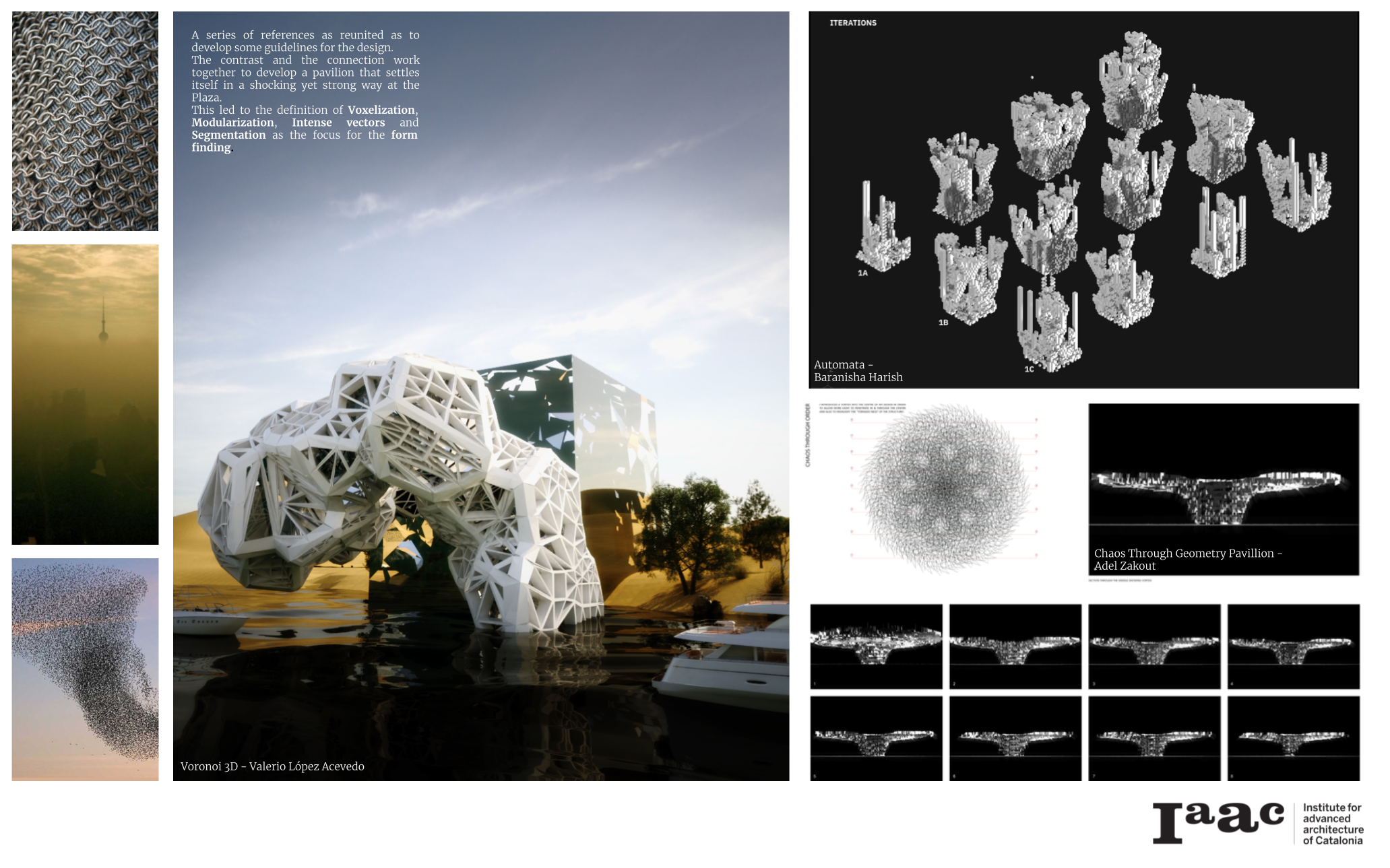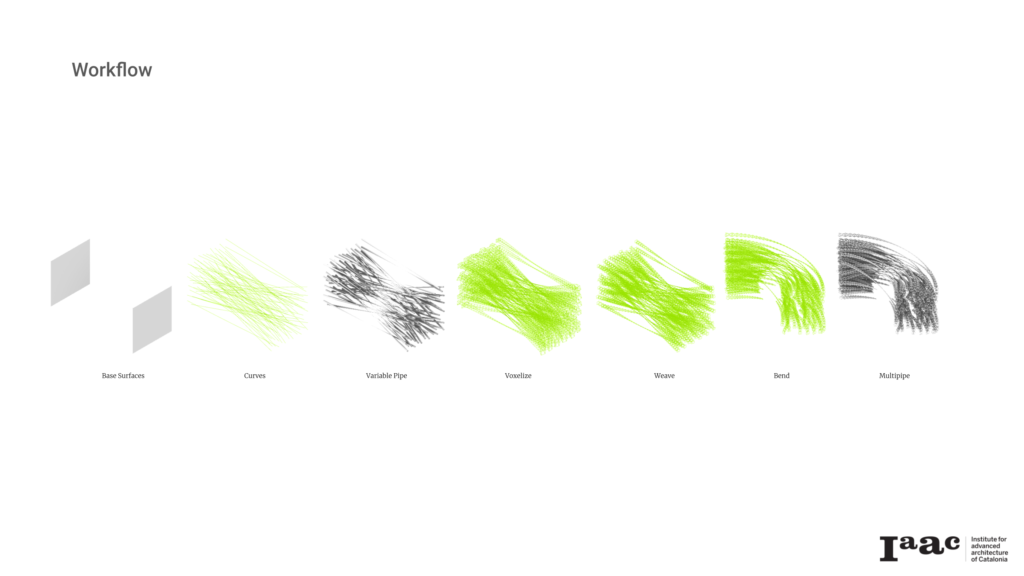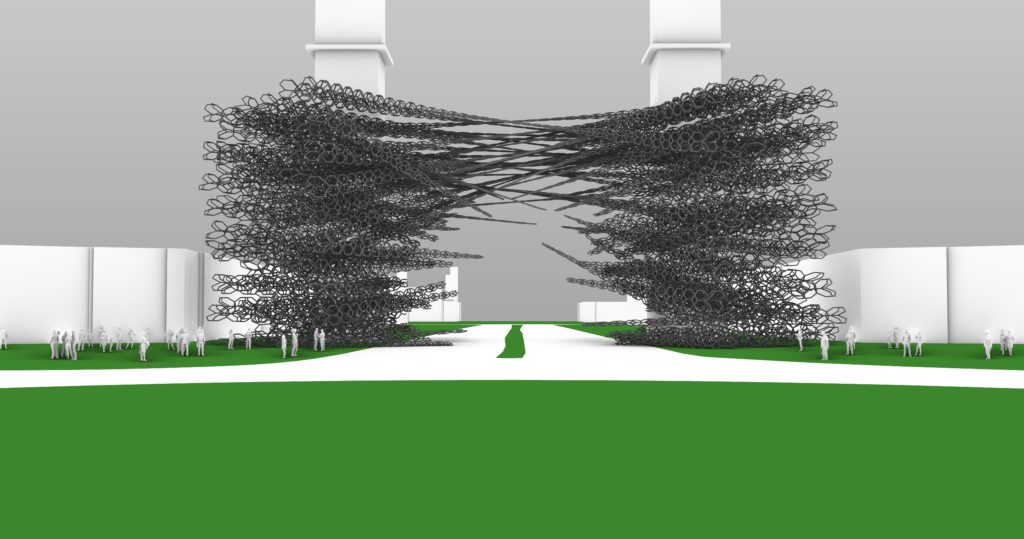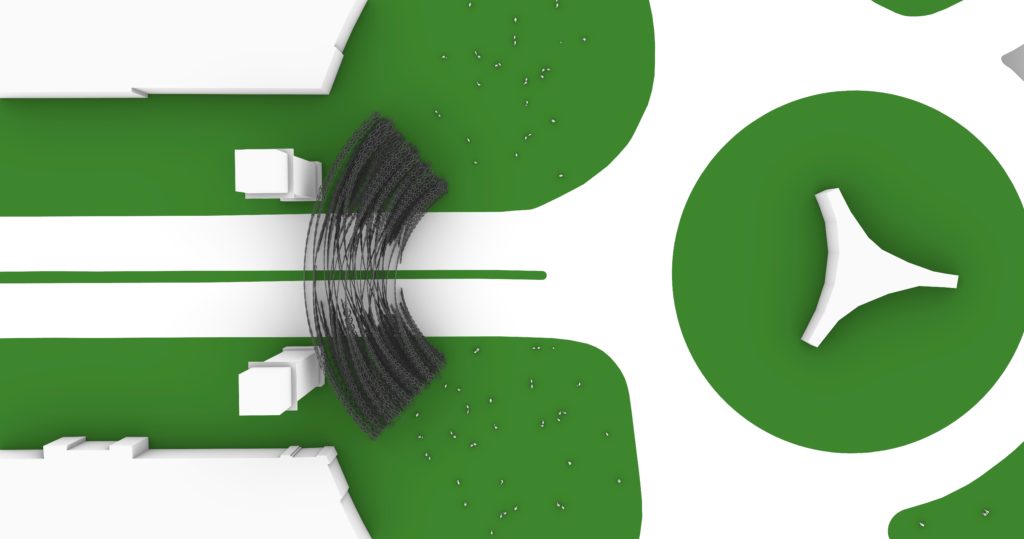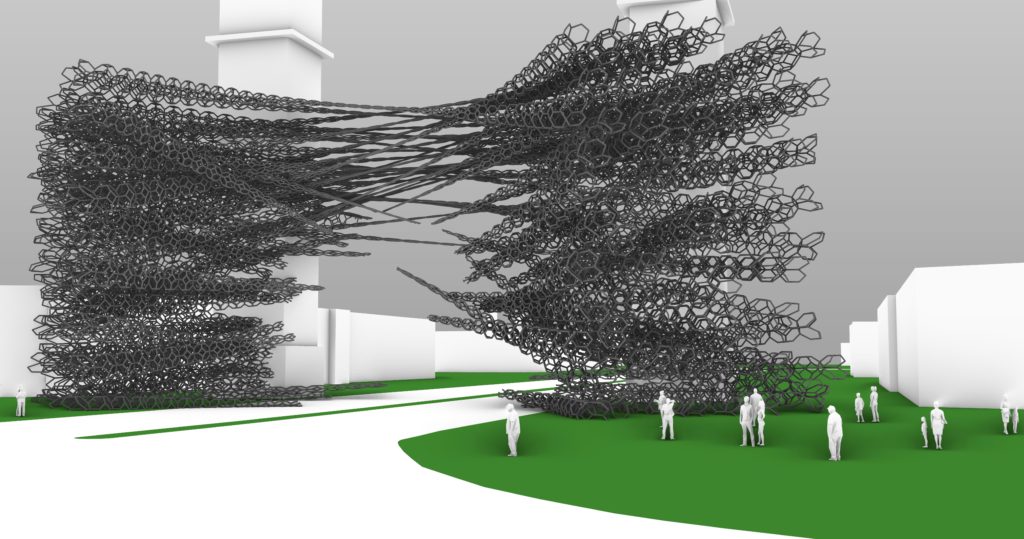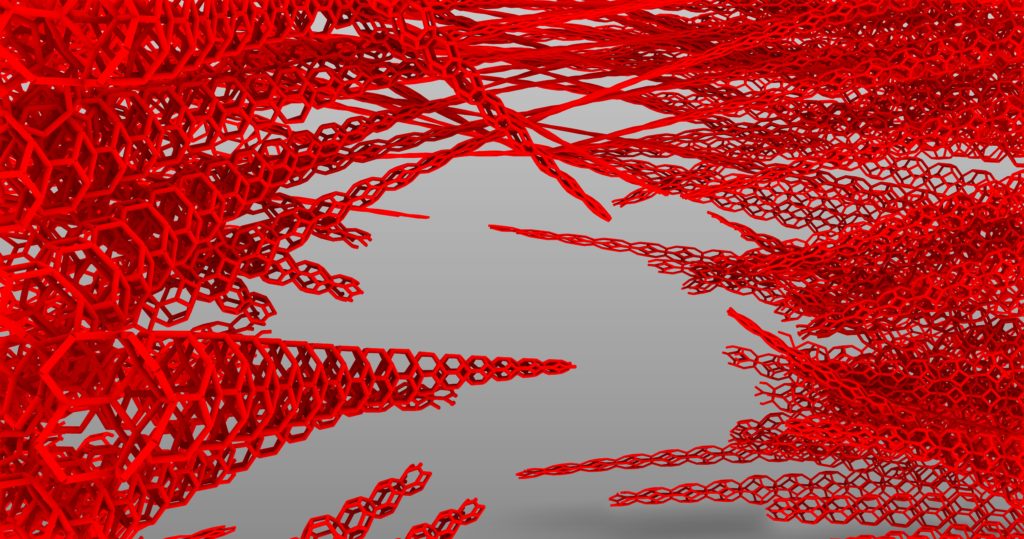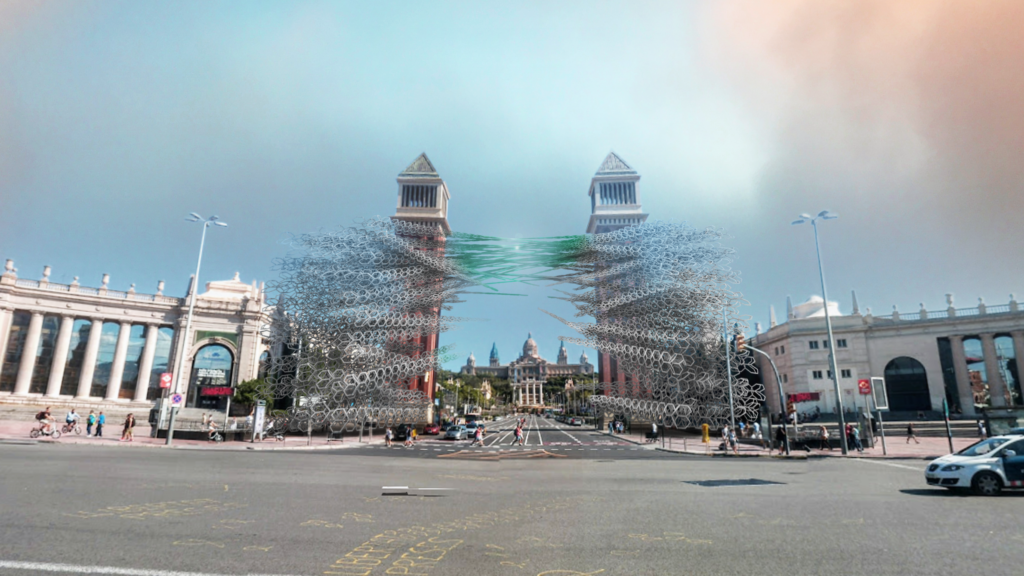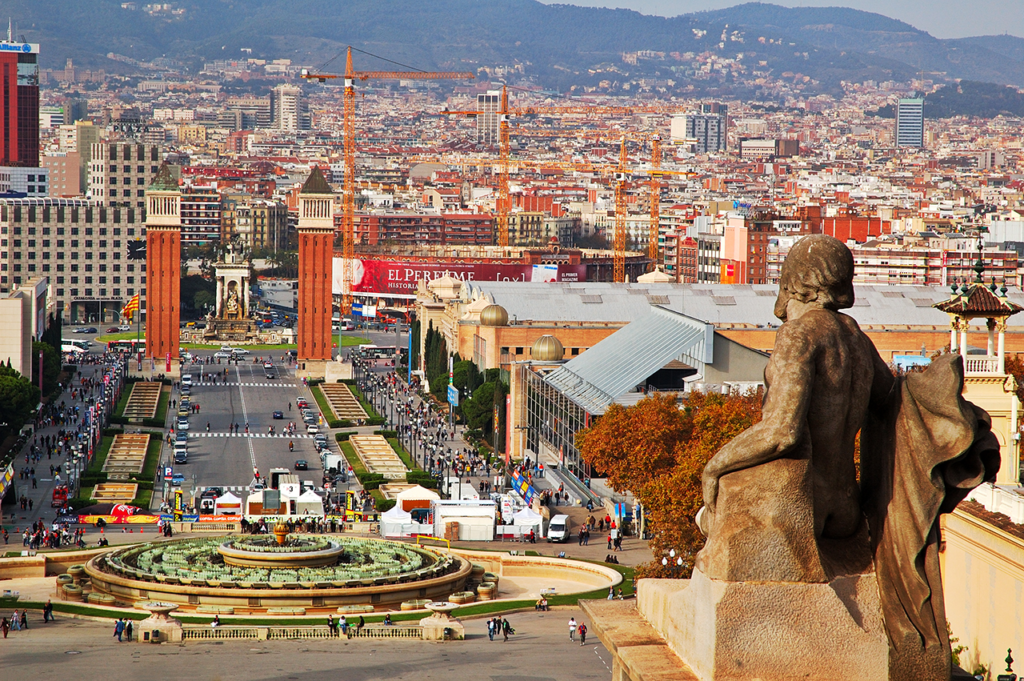
Plaza
The plaza chosen for the design was Plaza España.
One of Barcelona’s most important squares, Plaza España was built on the occasion of the 1929 Barcelona International Exposition, held at the foot of Montjuïc, in the Sants-Montjuïc district.
One of the city’s biggest squares, it is the junction of several major thoroughfares: Gran Via de les Corts Catalanes, Avinguda del Paral lel, Carrer de la Creu Coberta and Carrer de Tarragona, and leads to the Palau Nacional through Avinguda de la Reina Maria Cristina, which houses the Museu Nacional d’Art de Catalunya (MNAC).
It was designed by Josep Amargós. The fountain at the centre of the square was designed by Josep Maria Jujol, a collaborator of Antoni Gaudí, while Miquel Blay designed the statues. The buildings were designed by Nicolau Maria Rubió i Tudurí.
CONCEPT
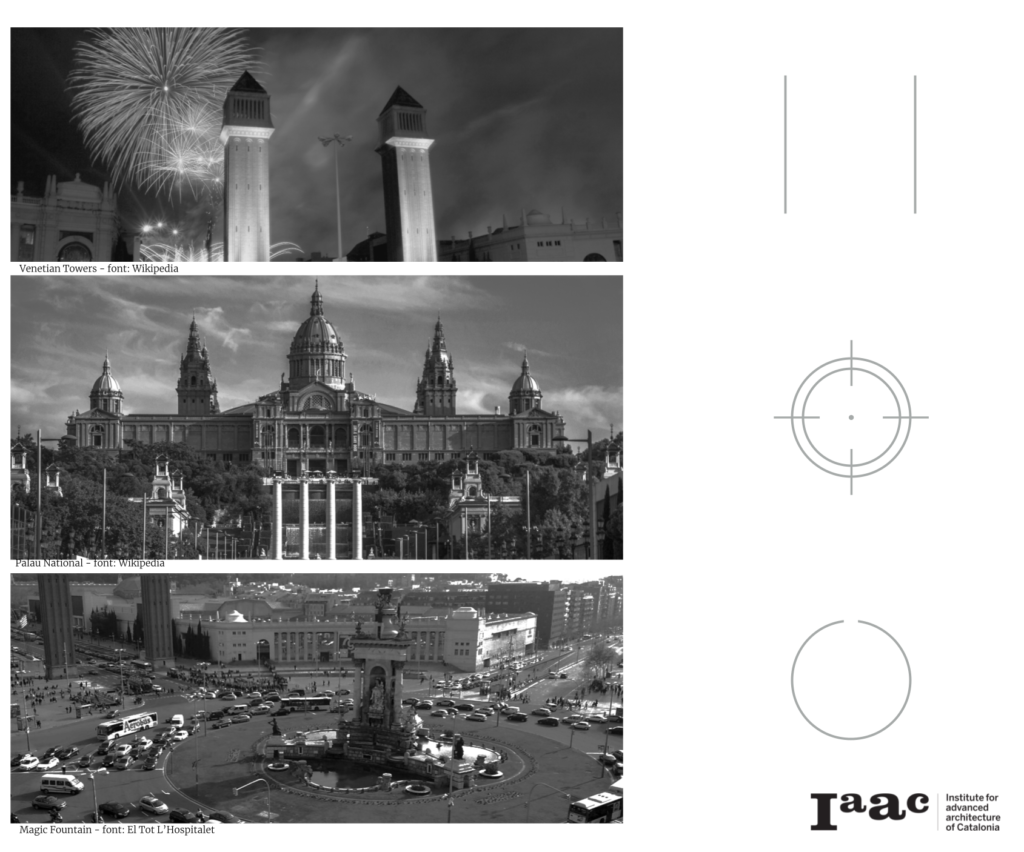
In a basic sense, the idea of the pavilion was to build on to what we consider to be the most iconic elements of the plaza by abstracting their fundamentals.The Venetian towers mark the entrance as a large portico and their vertical duality defines the split element of the pavilion – breaking it into two large chunks.
As for the history of the Plaza goes, it’s construction main guideline was to lead into the Palau Nacional. For that, it was decided that the Palau was to be interpreted as the target of the structure and where it would lead to. To treat the royalty as a “beyond reach” idea – bringing the plaza into the commoner ground while leaves royalty as a relic – and a reminder – of the past.
The final aspect is the round geometry for the plaza itself and the vehicular movement existent arround it.It’s site is located connecting very important centres of Barcelona and this intense, fast and almost chaotic movement – of vehicles and people – was to serve as the vectors of elements for the pavilion.
As the plaza used to hold public executions and conducts people to the palace, the royalty perpetuates itself upon fear and intimidation while balancing it with beautiful avenues and castles.
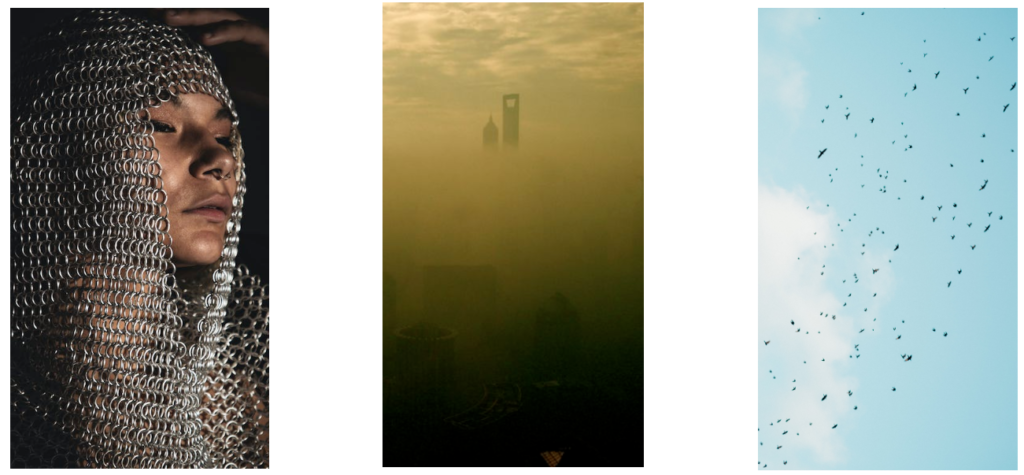
On the other hand, plazas were usually the place where peasants and commoners would join each other in public events either for admiration, or revolution.
These are then represented by the chainmail element. Associated with chivalry and knighthood; at the same time that represents war and repression. Made out of chains, this element also recalls to the confinement and the oppression suffered by people in the hands of tyrannical rulers. Today, we no longer have kings or queens, but that does not mean that we have no tyrants.
The vehicular flow at the plaza reminds us that this is a large city with most of the metropolitan problems. One of the greatest being the climate change. It is represented by the smog haze – at this point – already an usual event at most large cities. It points out how the oppressors – no longer a a monarch – but a tyrant all the same – try to gaslight the people into believing that everything is fine; Only for getting immediate profit and control.
Breaking the chains is, therefore, not only an act of rebellion. It is the act that matters. Not so that we can have a better future – but for us to have any.
